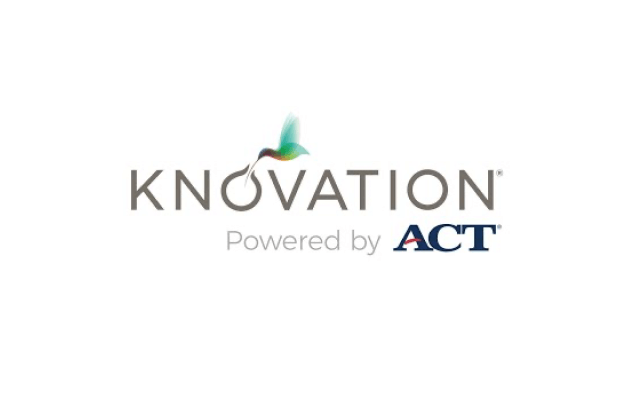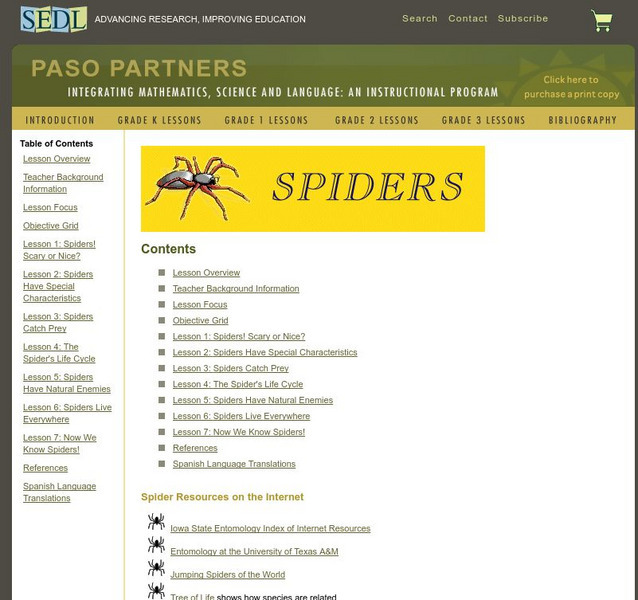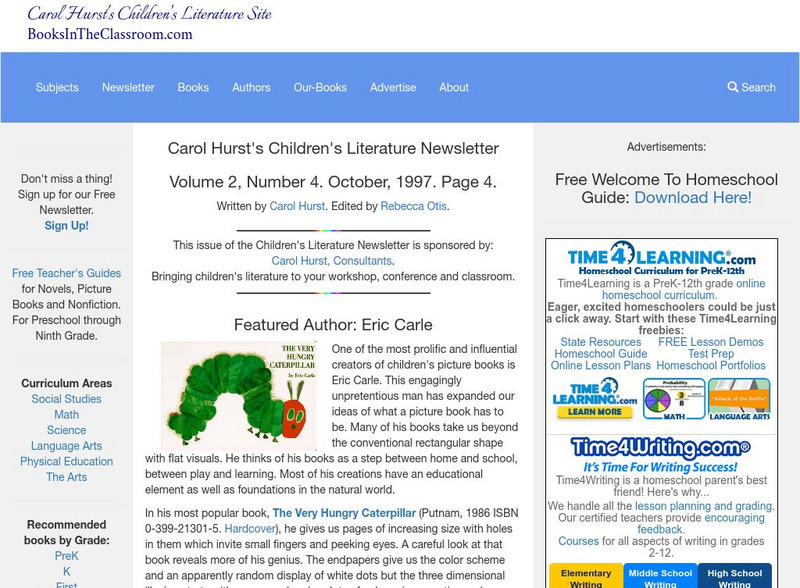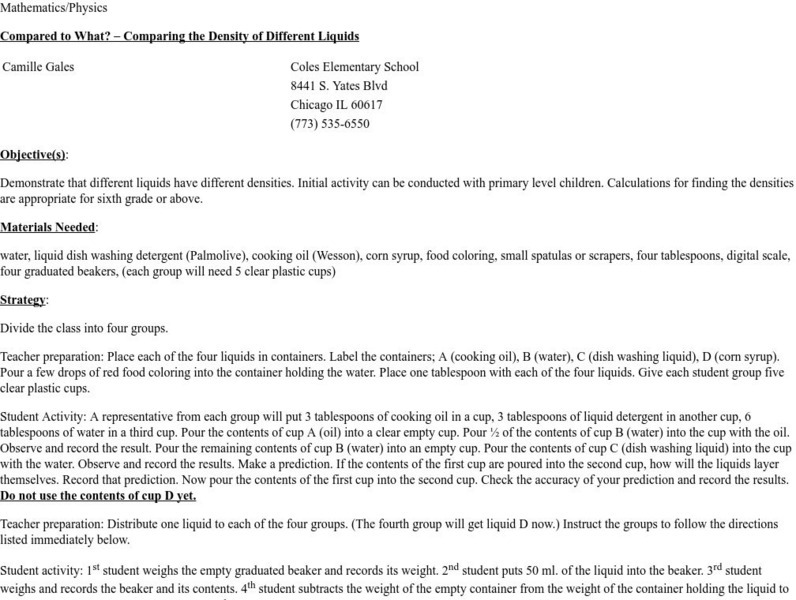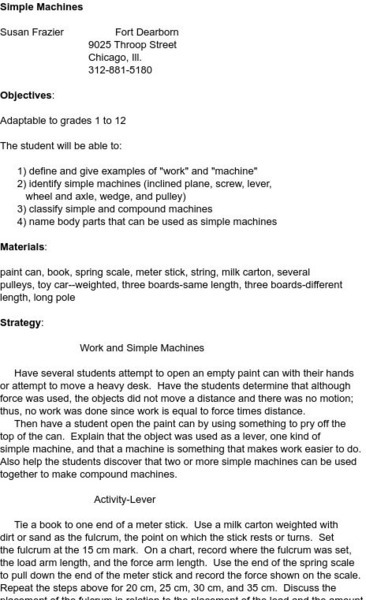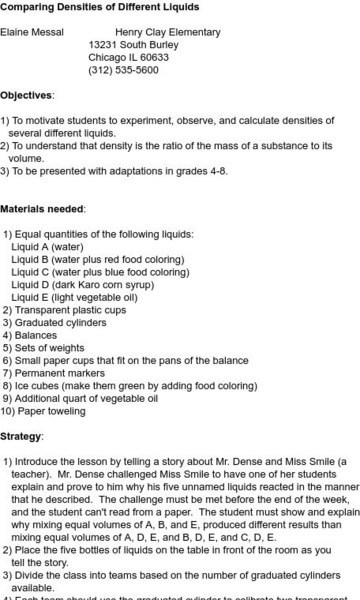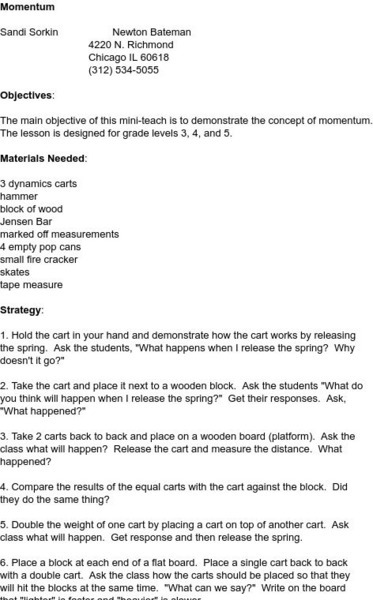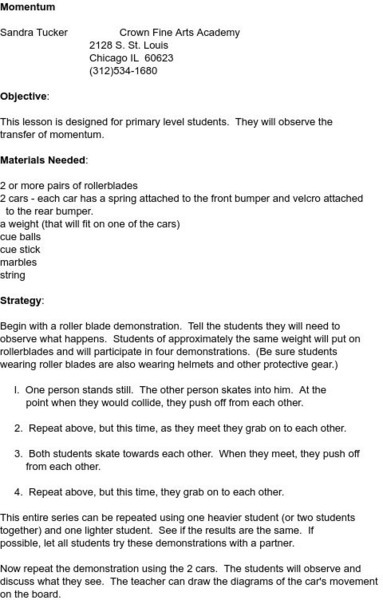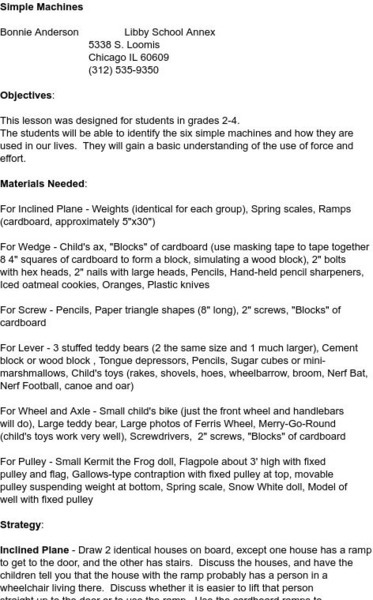American Chemical Society
Middle School Chemistry: Periodic Table and Energy Level Models
Students interpret the information given in the periodic table to describe the arrangement of electrons on the energy levels around an atom.
Other
Woodrow Wilson Leadership Program in Biology: Populations to Molecules
A large collection of lesson and labs developed by high school biology teachers. Lesson plans cover the topics of Drosophila, population genetics, gene, molecular genetics, chromosomes, genetic disease, genetic counseling, and bioethics....
SEDL
Sedl: Spiders
This is a wonderful resource for teachers who want to help children appreciate the place spiders have in the world and lessen their fear of spiders. Includes 7 sequenced lessons/units with detailed teacher notes, student activities,...
Other
The Science Spot: Science Classroom
A collection of activities for all areas of science exploration in the classroom.
National Institutes of Health
Nih & Niehs: Chemicals, Chemicals, Everywhere
An activity for students to recognize that everything is made up of chemicals. Students will learn that chemicals are produced both naturally and synthetically. Students will also study the work of toxicologist as they ride along with a...
Books in the Classroom
Carol Hurst's Children's Literature Site: Eric Carle
What do you know about Eric Carle, the author? This Carol Hurst site highlights some interesting facts about this author's life and refers to some of his books.
Alabama Learning Exchange
Alex: Atoms and Models of Atoms
This activity introduces students to scientific models. The students will learn how models of the atom have changed as new evidence is gathered. The students will also learn about the current model of the atom. Each student will make a...
Alabama Learning Exchange
Alex: "Electron" Ic Battleship
The students will play a game of Battleship on the Periodic Table to review electron configuration of the elements.This lesson plan was created as a result of the Girls Engaged in Math and Science University, GEMS-U Project.
Alabama Learning Exchange
Alex: Burn Baby Burn!
The students will review the concepts of electromagnetic spectrum, properties of light, and the transition from ground to excited state of electrons in atoms. In laboratory groups, the students will identify the characteristic light...
Alabama Learning Exchange
Alex: Living in a "Submicro" World
This is a technology-based lesson plan designed for high school Chemistry learners as an introduction to the study of the fundamental nature and structure of the atom. Students will create a publication using Desktop Publishing software...
Science and Mathematics Initiative for Learning Enhancement (SMILE)
Smile: Comparing Liquid Density
Because different liquids have different properties, density also differs. In this lesson from the Illinois Institute of Technology, students will calculate densities of water, dish-washing detergent, cooking oil, and other liquids.
Science and Mathematics Initiative for Learning Enhancement (SMILE)
Smile: Newton's Laws of Motion
Lesson plan from the Illinois Institute of Technology that incorporates many demonstrations like pulling a tablecloth from under a place setting, or launching a rocket to show Newton's laws.
Science and Mathematics Initiative for Learning Enhancement (SMILE)
Smile: Simple Machines (Grades 1 To12)
In this lesson plan students start by trying to open a paint can with their bare hands. Eventually, they will use a lever to open it. Various activities are used to enforce different simple machines.
Science and Mathematics Initiative for Learning Enhancement (SMILE)
Smile: Comparing Densities of Different Liquids
This lab experiment has students observe and compare the density of five different liquids while measuring mass and volume.
Science and Mathematics Initiative for Learning Enhancement (SMILE)
Smile: Projectiles
Lesson plan in which students will observe demonstrations and interact with various objects dealing with projectile motion. Subject matter for intermediate or middle school.
Science and Mathematics Initiative for Learning Enhancement (SMILE)
Smile: Momentum
Lesson plan to be used for grades 3-5. Does require a Jensen Bar, dynamic carts, firecrackers, and pop cans. Change the masses of the carts to compare and contrast momentum.
Museum of Science
The Atom's Family: The Phantom's Portrait Parlor
In this activity, students investigate the atomic world by attempting to reduce paper to the size of an atom. Although students won't be able to cut the paper that small, they will gain a better understanding of how small the atom is.
Michigan Reach Out
Michigan Reach Out!: Nasa Robots
Basic lesson plan that helps students understand how robots perform simple activities in space.
Michigan Reach Out
Guess What! A Lesson About Atoms
A lesson plan outlining a very simple way to introduce young scholars to how the structure of the atom was determined. Uses a mystery box with surprise items inside.
Science and Mathematics Initiative for Learning Enhancement (SMILE)
Smile: Objects Race
In this lesson plan grab a slope and different objects. Roll the objects down the slope and record which is the fastest. Students analyze the features of the objects that make them slow or fast.
Science and Mathematics Initiative for Learning Enhancement (SMILE)
Smile: Transfer of Momentum
This instructional activity designed for primary level students, describes the bodily-kinesthetic method of showing the conservation of momentum with students rollerblading, using cars, and colliding marbles.
SMART Technologies
Smart: Temperature and Thermal Energy
Teach students the relationship between temperature and thermal energy. It also addresses the three temperature scales: Fahrenheit, Celsius, and Kelvin.
Science and Mathematics Initiative for Learning Enhancement (SMILE)
Smile: Potential Energy: How Is It Related to Kinetic Energy
After creating three different ramps with various heights, learners will release toy cars from the tops of each ramp. Based on the elementary age level, students will collect data and analyze it.
Science and Mathematics Initiative for Learning Enhancement (SMILE)
Smile: Simple Machines
Good combination of teacher demonstration and student interaction for this simple machine activity. Great for talking about force and work. Plans are for grades 2-4, yet are adaptable.


